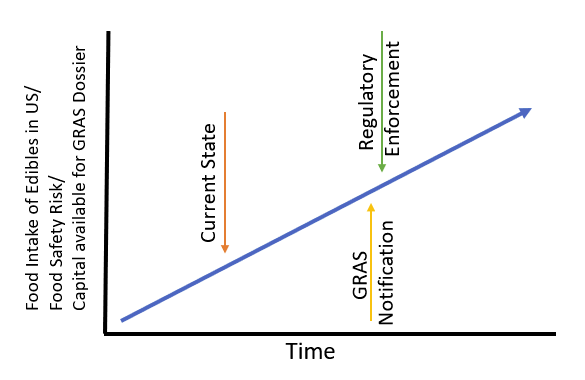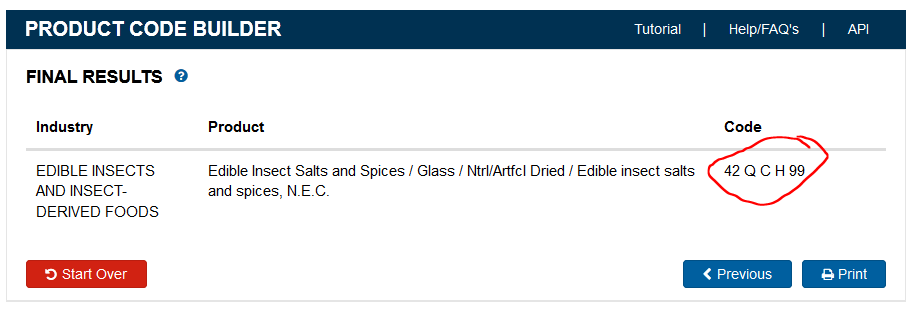If cricket powder does not have a GRAS dossier for food use, why haven’t the regulators cracked down on the industry? I believe the answer lies in ‘enforcement discretion’.
A well know example of enforcement discretion is driving above the speed limit. Enforcement discretion can occur across the regulatory landscape and is an inherent component of regulatory policy. We know that the FDA uses enforcement discretion as one of its tools: Policy Regarding Certain Entities…

The FDA has only commented with informal policy on the use of insects as food. Informal Policy and Guidance’s describe the Agency’s current thinking on a topic and should be viewed only as recommendations, unless specific regulatory or statutory requirements are cited. The use of the word ‘should’ in Agency guidance’s means that something is suggested or recommended, but not required.
However, edible insects are regulated in the same manner as any other food per the FDA informal policy.
When insects are added to processed food (used as an ingredient), insects are subject to food additive regulations which are managed by Generally Recognition of Safety (GRAS).
The routes to make a GRAS determination are 1) self-determination, 2) FDA Notification with ‘No Questions’ response. The scientific and technical standards for GRAS are extremely high regardless if it is a self-determination or if the GRAS notice has been reviewed by the FDA. For example, the Pea Protein Notification below is 57 pages long, contains 6 parts and 15 tables.
GRAS Notification – Pea Protein
There is not an edible insect GRAS notification on file with the FDA. Private entities with a GRAS dossier on file would likely not pass FDA review due to the stringent scientific requirements. GRAS dossiers are typically created by 3rd party law consultants.
Regulatory bodies could be using a few reasons for enforcement discretion.
- Population intake of edible insects is low; therefore, risk is also low.
- There is currently no evidence of people being harmed by consuming insects.
- State and local regulators don’t have the technical capability to enforce GRAS compliance.
The current situation would change if there is evidence that consumer is being harmed by edible insects. The FDA has removed the GRAS status for Partially Hydrogenated Oil as the research has shown that the ingredient is harmful. A higher levels of insect consumption could trigger regulatory action. However, this is likely not happening soon. And by the time intake is significant, the industry would hopefully be able to create a sufficient GRAS dossier that would hold up to scrutiny.

There may also be a different interpretation of the definition of Food Additive. My interpretation is that any ingredient, including whole foods, added to food is a food additive. So even onion powder needs a GRAS dossier? The Food Additives Status List omits ‘obviously safe substances’. Wholes foods such as onion powder would be considered an obviously safe substance and would not need to be on an approved GRAS list. The Food Additives Status List mostly includes ingredients that have a specific technical function. And example of an omitted ingredient would be pumpkin seeds. The argument is that Cricket Powder doesn’t need to be on an approved ingredient list and doesn’t need a GRAS dossier.
Depending on the audience and situation, maybe a different response on food safety and regulation would be warranted.
“Crickets are considered food under the Food Drug and Cosmetic Act. Cricket powder is an obviously safe food is it contributes a complete protein to the diet and is not injurious to health.”





